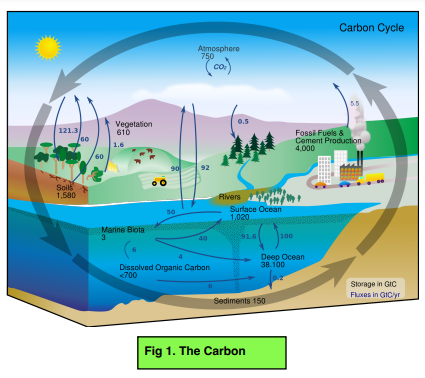Cycles - Cycles & The Carbon Cycle (GCSE Biology)
Cycles & The Carbon Cycle
Cycles
Elements and compounds are not created, they are merely cycled into different forms. We see this in our own bodies, as we take in proteins, convert them to amino acids, then use these amino acids to build proteins in the body.
Different materials can also cycle through the abiotic and biotic components of an ecosystem.
We will study the important carbon, water and nitrogen cycles. These are important for maintaining habitats, fresh water and flow of nutrients.
The Carbon Cycle

Do not get too worried by this diagram. Just follow the paths that are shown by the arrows.
Carbon must be cycled through the environment. There are only four processes in this cycle that you need to know for this process.
We will begin with how carbon enters the atmosphere.
- Combustion. Combustion is burning. Humans have harnessed combustion to transfer energy. We burn fossil fuels in order to provide energy. Burning any carbon containing compounds releases carbon dioxide into the atmosphere.
- Photosynthesis. Once the carbon dioxide is in the atmosphere, it must return into organisms. This occurs during photosynthesis. Plants take in Carbon dioxide and convert the carbon into glucose.
- Respiration. Animals consume plants, transferring carbon along. The glucose is then used in respiration and converted to carbon dioxide to return tot he atmosphere.
- Decomposition. When plants and animals die, micro-organisms known as decomposers break down their bodies, causing a release of carbon dioxide back into the atmosphere. They also break down organisms into their mineral ions and return these to the soil. From here they can be taken up by plants. These decomposers are also known as detritivores.
However, not everything decomposes. Some organisms are compressed and over thousands/ millions of years, they form fossils and fossil fuels including oil, natural gas and coal. These are then burnt and this brings us back to step 1: combustion.






Still got a question? Leave a comment
Leave a comment